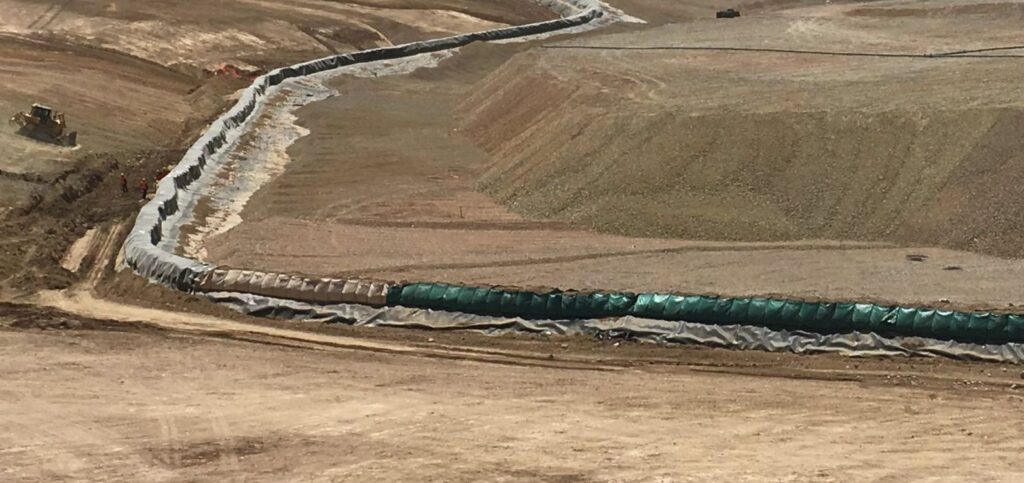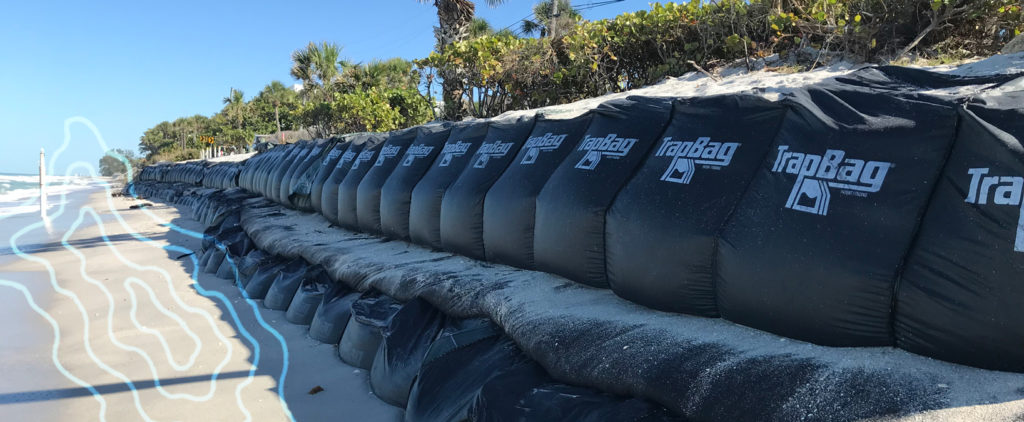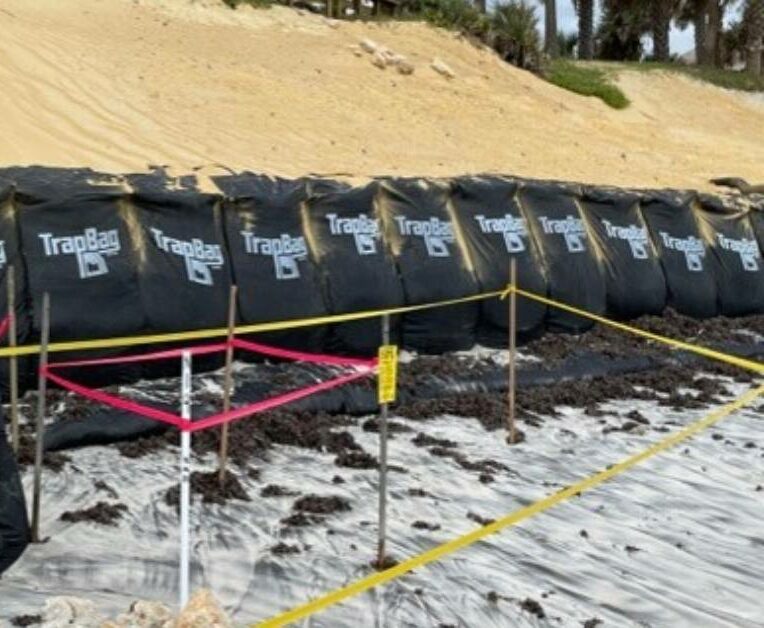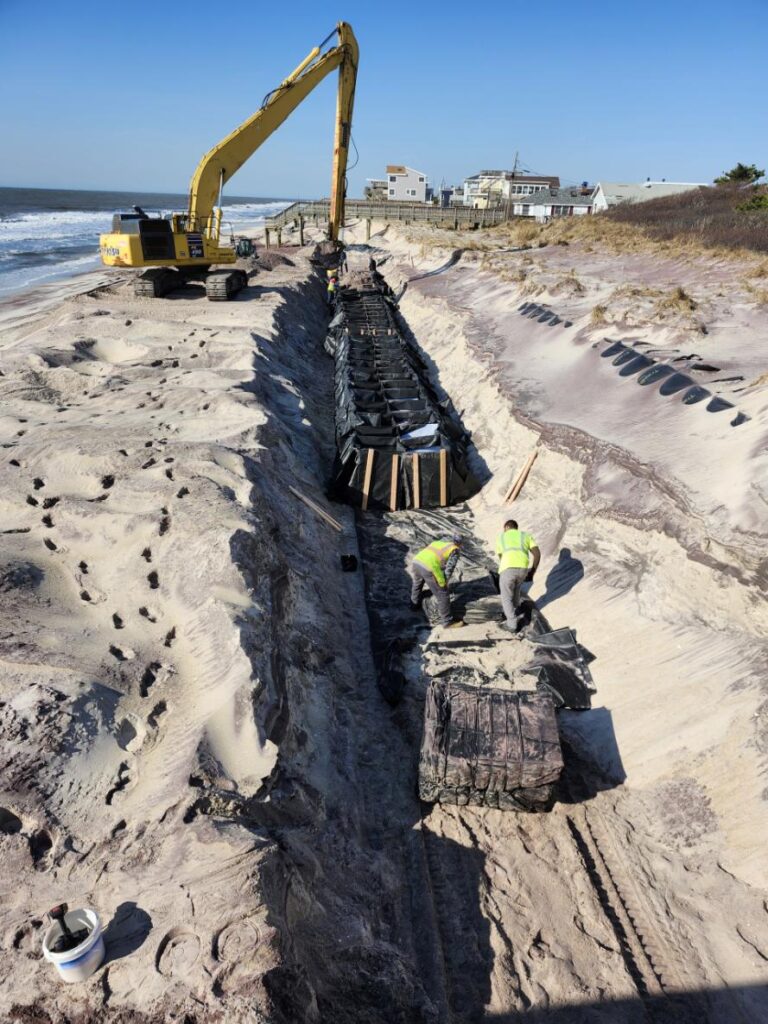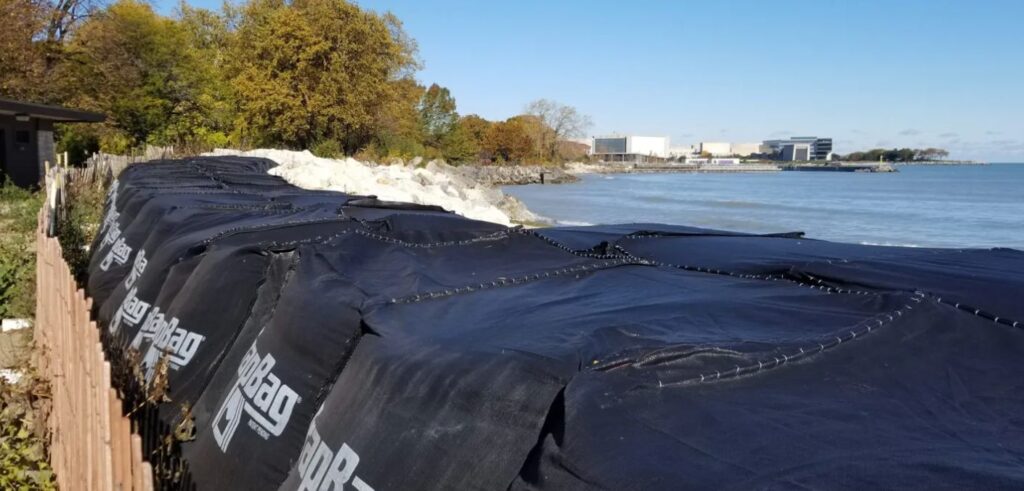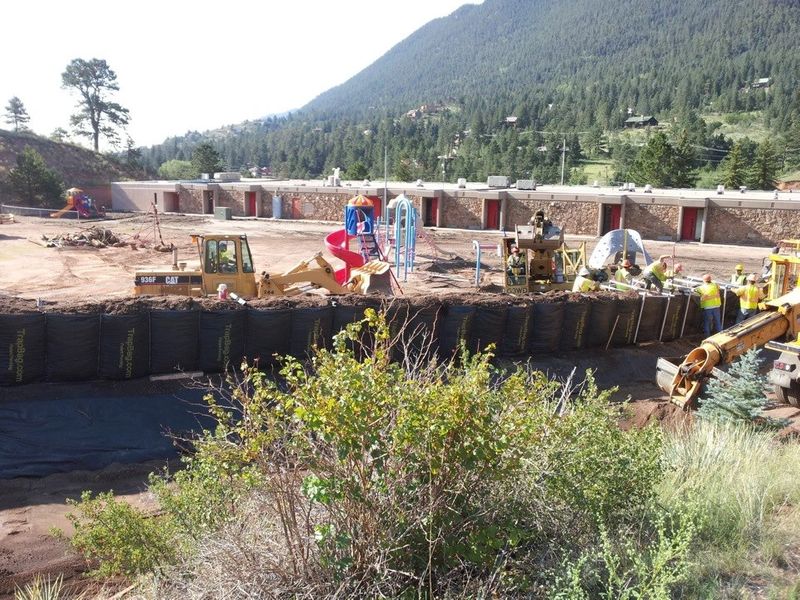Using TrapBag for Environmental Protection
Climate change impacts sensitive habitats and other parts of the natural environment in countless ways. These habitats need protection with both short- and long-term strategies.
TrapBag is an ideal multipurpose solution that can mitigate the environmental impacts of flooding on wildlife and natural areas. Its design can withstand the impact of thousands of gallons of water moving along riverbanks and shorelines. It’s also made of a tough geotextile material that allows it to resist infiltration from water and other liquids.
Environmental Protection with TrapBag
TrapBag is designed to withstand flooding and either repel or confine water, certain chemicals, and oil. Each cell in a TrapBag barrier is interconnected with the cells around it, which strengthens the entire barrier and allows it to hold back floodwaters during major storms or flooding events.
The barriers are designed to be easy to set up in just a few steps:
-
Open the packaging: TrapBag barriers come folded up on a pallet. They are pulled out like an accordion and can be stretched up to 50 linear feet per unit at their maximum length.
-
Place the barrier: Prop the TrapBag environment protection barrier against vulnerable riverbanks, near shorelines, along the perimeter of sensitive marshlands, or wherever you might need it to prevent flooding, soil erosion, or contamination from stormwater, oil, or chemicals.
-
Fill the cells: A team of three people with a skid steer or excavator can fill your TrapBag barrier within minutes with sand, washed gravel, or concrete. Once you’ve completely filled the first barrier, you can also stack another one on top of it and repeat the process for added height.
Who We Serve
We work with organizations and agencies worldwide to help them protect sensitive and vulnerable habitats from flooding, erosion, spills, and other dangerous events. Some of the groups who count on TrapBag for help include:
Government agencies
All levels of government-run environmental protection agencies can use TrapBag as a solution to protect natural and wildlife areas from extreme weather, oil spills, and soil erosion from human activities. It provides temporary protection in tandem with long-term restoration projects.
Learn More »Coastal engineering firms
Coastal engineering firms across the United States rely on TrapBag to protect coastlines, stabilize sand dunes from within, and protect coastal infrastructure and habitats alike.
Learn More »Emergency management
Emergency management agencies and organizations can use TrapBag barriers for everything from chemical and oil spill protection in sensitive habitats to flood mitigation in low-lying areas.
Learn More »Projects
How TrapBags Compare to:
Many local governments have utilized dams and dikes as a way to mitigate how floods damage the environment. However, in addition to being expensive and challenging to install on local waterways, manmade dams can disrupt migratory patterns for fish and other wildlife. They can also cause floods in adjacent areas, or potentially cause invaluable marshlands to dry up, depending on their placement.
By contrast, temporary TrapBag dams are a less disruptive temporary solution that environmental protection services can use to mitigate and regulate the flow of water during floods. They have the capability to hold water back to prevent marshlands and floodplains from being damaged during century or millennium flood events, and can easily be removed once the threat has passed.

Seawalls and floodwalls protect sensitive areas from coastal flooding by putting a physical barrier between the ocean and the coastline. However, they can also cause damage to shorelines and habitats in adjacent areas, so they’re rarely an ideal long-term solution.
TrapBag provides a temporary solution that minimizes disruptions to the natural currents and distribution of sand and silt along coastlines and rivers. Once the flooding emergency or hurricane has passed, the barriers can be disassembled with ease.

The gold standard for environmental protection in many cases is to restore natural habitats. Habitat restoration offers some of the best protection from flooding available along rivers and streams. Tidal marshes also act as a natural barrier to mitigate storm surges during hurricanes—therefore, habitat restoration is beneficial for the environment, wildlife, and humans alike.
However, habitat restoration is a long-term process that can take years or decades. Ecosystems are fragile and need the right conditions for recovery. TrapBag can provide temporary protection for recovering habitats during floods, mudslides, and other natural disasters that could potentially set back restoration efforts.
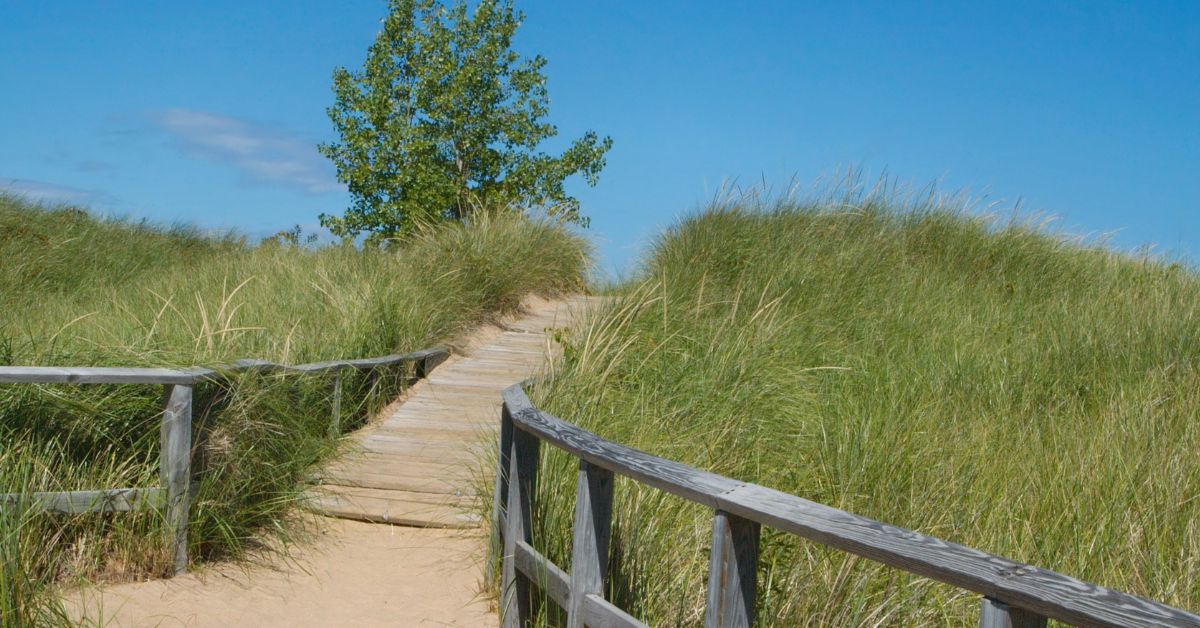
Frequently Asked Questions (FAQ)
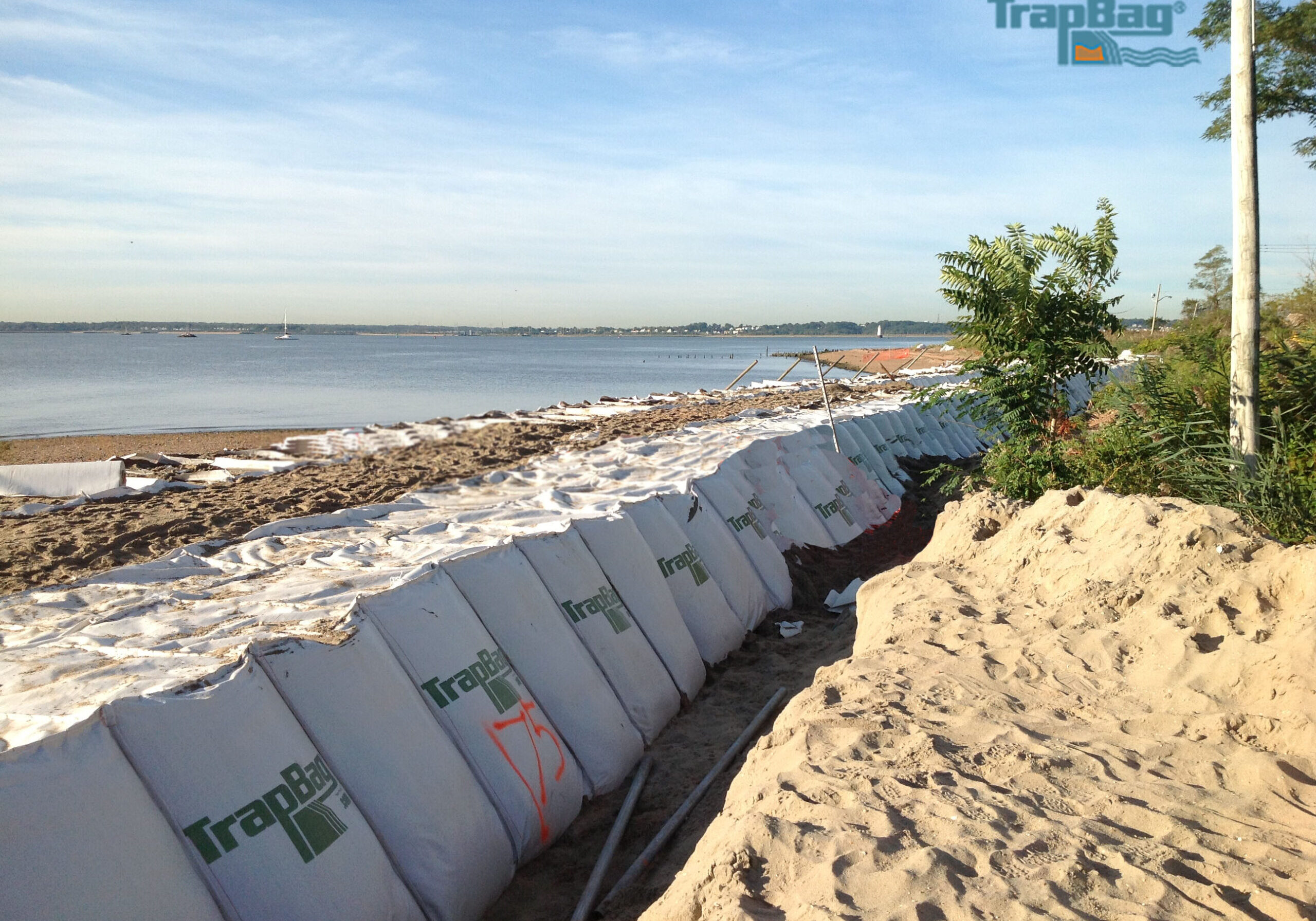
Why Choose TrapBag?
TrapBag improves on the traditional design of sandbags. One 100-foot section of TrapBags replaces 8,000 sandbags. We engineered the cells in these barriers with a pentagonal shape with one sloped side and one vertical side to ensure their structural integrity. The barrier is also less likely to give way than other flood and chemical spill barriers because of its intuitive design where 60% of the mass is in the bottom 50% of the barrier.
Even more, our staff wants to ensure you can protect what matters most. Our team is here to help 24/7 across multiple countries and continents.

